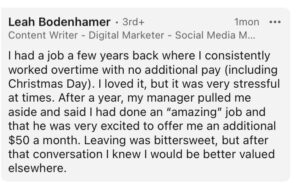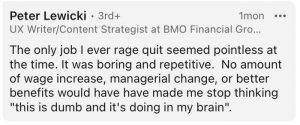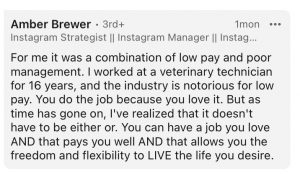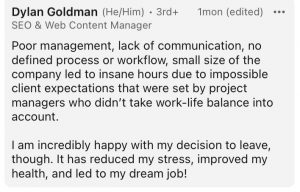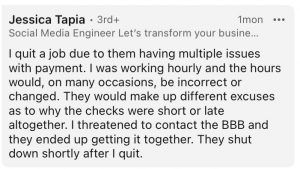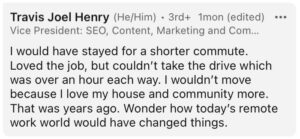Recently, I booked an appointment with AAA to get a Real ID driver’s license. The day before I was set to go, I received a call from the branch manager with regrets for canceling my slot. Why? They did not have enough staff.
It’s “An Unprecedented Labor Shortage.” Heritage.com explains: “The big story is a 9.2% drop in employment among workers ages 65 and older and a 3.0% decline among workers ages 20 to 24.” Let’s focus on the latter, which is a subset of “Generation Z.” Born between 1997 and 2012, Gen Zers are tech avid and savvy. They represent a supersize block—2.47 billion, or 32%, of the world’s 7.7 billion people and about one in five in the U.S. They are much-needed additions to the workforce. But attracting them to join the payroll and retaining them is not a slam dunk. Here’s why.
Gen Z in the Workplace—
Who, What and How to Attract and Retain?
Organizations seek Gen Zers for their unparalleled digital skills and fresh outlooks. However, the members of this group are unlike the previous cohort, Millennials, and others. Gen Zers tend to be: “more communicative, more competitive” as well as “more independent” and “more entrepreneurial.” These are only some of the distinguishing features. That said, it is “important for business leaders to understand the work, and benefits that they must offer to best recruit and keep them.”
“Who is Gen Z and How Will They Impact the Workplace?” reports that Gen Zers “are driven by different needs than the generations that came before them.” These include:
-
Work/life stability
They’ve witnessed the burnout that can occur when work overtakes all else; perhaps as children they even had to bear the brunt of it. Now that it’s their time to enter the labor force they don’t want any part of this adverse effect. Instead, they desire a more even-handed experience. Note: almost 40% of the members of Gen Z deem “work/life balance as a priority” when considering an employer.
Tip: Stay fluid
Keep flexibility top of mind when setting work policies, such as hybrid and remote arrangements. But don’t stop there. “How employers are wooing Gen Z” cites examples. “Sage Hospitality… is piloting a four-day workweek for positions including cooks and housekeepers. And healthcare firm GoodRx is letting employees work from anywhere in the U.S., hiring an outside company to provide offices.” Indeed weighs in by advocating employers offer parental leave, “generous vacation time” and “generous healthcare coverage over perks like free food or happy hours.”
-
‘Phigital’ perspective
Whereas those who have retired from the workforce or may in the next decade are “Baby Boomers,” young arrivals are known as “Zoomers,” hence the “Z” for “Gen Z.” And zoom they do, referring to the speed at which they adapt to and glom onto technology. Digital natives, they view their devices as “extensions of themselves.” They use them to commurenicate with others on the job, organize their work and more.
Tip: Tech up
Stay on the cusp of the latest organizational platforms and digital tools. Ask Gen Zers what tools they need to succeed and factor in their feedback in IT planning. Connecteam suggests providing a state-of-the-art arsenal, e.g., Google Suite, Slack and Salesforce. Another suggestion: provide microlearning platforms to help Gen Zers develop on their own the skills to succeed. More: “On the recruiting end of things, companies that have a presence on a platform that embraces video—such as YouTube or Instagram—are more likely to catch the eye of Gen Z hunters.”
-
24/7 connections/interconnections
Bred on high-speed internet, Gen Zers interact with peers and others online (and offline) all the time. Social media is their oxygen. So too is immediacy and intimacy in their discussions; they opt for Facetime over texting and calling. This carries over to the job. “Gen Z prefers steady communication with their professional teams and thrives in an environment of transparency.” Factoids: “90% of Gen-Z workers desire and value a human connection in their professional environments, 60% of Gen Z employees expressed the desire to have clarity on the expectations and parameters of their jobs.”
Tip: Combine high tech, high touch
Loop in Gen Zers and stay with them. “Chats via Slack, quick check-ins over email, and even a simple emoji counts as the kind of communication Gen Z feels they need. Recognize contributions. “Gen Z wants to feel appreciated (and for that matter, all workers do). Make it clear that you care by asking for input regularly and creating a two-way dialogue.” Update the members of this group; keep them apprised. Gen Zers appreciate receiving immediate feedback so they can be their best.
-
Breaking demographic boundaries
Gen Zers have awareness and interest in far-ranging social issues; that pertains to their interactions online as well as offline. Re the latter, Pew Research reports that almost half of all Gen Z individuals are considered “racial or ethnic minorities.’” This mix extends beyond race to the gender and sexuality spaces. “One in 6 Gen Z have reported they are either transgender or queer.”
Tip: Vive la difference!
Go beyond lip service and writing to demonstrate that diversity rules. Show examples of company culture, initiatives, headcount/inclusion and funding along these lines “Many in Gen Z pay close attention to a company’s diversity efforts when making a decision of whether or not to pursue employment with a particular business—and it makes a big difference in the long run, as studies have shown that many employees who work at diverse organizations stay there beyond five years.” More: Make applications and forms inclusive with more gender-neutral options. Promote efforts to ensure job candidates understand the organization is “a diverse, supportive and inclusive workplace by getting Great Place to Work-Certified.”
-
Achievement oriented
“Common Gen Z traits include a competitive spirit and an eagerness to prove themselves.” Indeed suggests these emanate from wishing to stay at the front of the pack. It’s the Fear Of Missing Out—FOMO—principle in action. “Gen Zers don’t want to be left behind by their peers. With their successes always on display through social media, FOMO looms large for this generation.” Gen Zers, similar to their next oldest group, seek “upward mobility in their careers.”
Tip: Offer opportunities and education galore
Change, challenge and upward momentum may not only capture Gen Zers but also cement their interest and allegiance. Indeed suggests reflecting Gen Zers’ competitive nature in marketing and outreach and showcasing accomplishments and awards as well as growth and advancement opportunities to make your company stand out.” The word from LinkedIn’s Talent Blog is to “lean in on learning and growth.” That includes supporting an #AlwaysBeLearning culture and developing “mentorship opportunities and job rotation programs.”
-
Side gigs entrepreneurial instincts
Again similar to Millennials, Gen Zers are masters of the side hustle. As such, many fit the “slashie” style of work—multiple roles and sources of income. Resourceful and striving, many want to work for themselves. Indeed provides proof points: “58% of Gen Zers said they would like to own a business one day and 14% already do.”
Tip: Be open and receptive
Gen Z has led the way to the “side hustle era” that is in full force today. That’s reality, so adjust and embrace it. Ask potential employees about outside work-related activities and keep a pulse on the same for those already working for the organization. Understand and address change this wording so we’re not framing it as problematic within a framework of success. Coach these desires and support how they mesh with their full-time job. Above all, be open, honest and interested.
Keep in mind: Gen Zers play vital roles in the workforce. Get familiar with the new rules of the road. Knowing and acclimating to who Gen Zers are helps create the best environment to bring them onboard and optimize their commitment.
About the author.
You name it, she covers it. That’s the can-do attitude Sherry M. Adler brings to the craft of writing. A polished marketing and communications professional, she has a passion for learning and the world at large. She uses it plus the power of words to inform and energize stakeholders of all kinds. And to show how all of this can make a difference, she calls her business WriteResults NY, LLC.


